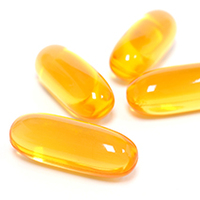Lactose Intolerance or Milk Allergy: What's the difference?
Author: Julie Brennan- Naturopath Date Posted:11 May 2017
The words intolerance and allergy are sometimes used interchangeably by people when discussing foods they react to. While some symptoms are particular to both intolerances and allergies, they develop for different reasons and treatment needs to be approached differently.
Dairy products are a common food that can elicit an adverse response, however the reasons for this can be quite different. Dairy products consist of water, fat, protein, sugar and vitamins and minerals. While people might not be able to absorb fats sufficiently and thus have a reaction to dairy, the most common causes are protein (allergy) and sugar (intolerance).
The main proteins found in dairy products are whey and casein; these are the substances that cause an allergic reaction. In Australia, one in 50 infants are allergic to dairy products, however the majority will outgrow this by around the age of 4. An allergic reaction can occur within minutes of milk consumption, or take up to hours – or even several days - to present. Symptoms include hives, eczema, facial swelling, vomiting, diarrhoea, raspy breath, wheezing, asthma or anaphylaxis.
Lactose is the sugar that is found in dairy products. It is broken down in the body by an enzyme called lactase, which is produced in the small intestine (this is where the majority of the nutrients in our food are absorbed). Approximately 65% of the world’s population has a reduced ability to digest lactose effectively, due to lactase production declining significantly from between the ages of 2 to 15 years. This means that the body cannot brake down the sugars effectively and stay in the digestive tract longer, leading to gas, bloating, nausea, diarrhoea and even vomiting.
Intolerance to dairy can also be the result of other issues in the gut. Conditions such as Coeliac disease, IBS and Crohn’s all create inflammation within the digestive tract which, in turn, compromises digestion. Over a period of time, this can manifest into one or more food intolerances – amongst other signs and symptoms - of which dairy is quite common. (Fructose malabsorption is another condition that can have a similar presentation as dairy intolerance and many people experiencing issues with these foods will have difficulty digesting dairy products.)
Quite obviously, avoidance of all dairy products is necessary in the presence of a dairy allergy. While an intolerance to dairy still requires abstinence, if the reason for the intolerance is due to an inflammatory condition (such as those mentioned above), your naturopath or nutritionist can establish a treatment plan to promote healing and repair within the digestive tract. This may allow for graduated reintroduction of some of these foods in the future, although this is very much on a case by case basis. Sunnybrook Health Store stocks a wide range of specialty foods for those with food intolerances.
BHlthsc (Naturopathy)
References
ASCIA (2016), Cow’s milk (dairy) allergy, https://www.allergy.org.au/patients/food-allergy/cows-milk-dairy-allergy
Genetics Home Reference, (2017), https://ghr.nlm.nih.gov/condition/lactose-intolerance
Milk Facts (n.d.), http://www.milkfacts.info/Milk%20Composition/Milk%20Composition%20Page.htm

























